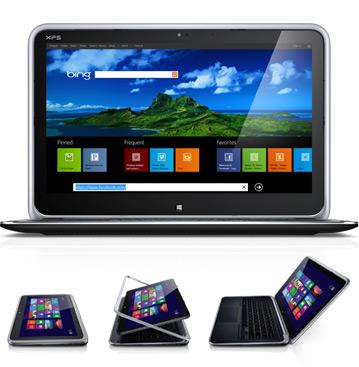 Do you have a Dell account at your hospital? Recently, Dell launched a few new tablet PCs:
Do you have a Dell account at your hospital? Recently, Dell launched a few new tablet PCs:- The Latitude 10 is a slate tablet running Windows 8 and it weighs 1.45 lbs.
- The XPS 10 is a slate tablet running Windows RT that docks into a keyboard. The tablet alone weighs 1.4 lbs.
Personally, I prefer the form factor of the XPS 10 because it docks into a keyboard (that includes a built-in battery) and turns the entire setup into a clamshell notebook. However, I'd recommend the Latitude 10 for medical professionals since it runs Windows 8 and that makes it compatible with enterprise applications like standard EHRs and CPOE systems. You can't install legacy Windows applications on devices running Windows RT.
The Latitude 10 has an optional docking station that lets you use the Latitude 10 as a desktop replacement device. Combine an external keyboard and mouse, plug the dock into a large monitor, and you're sitting at a regular workstation. When it's time to go, grab the tablet and you're off. The Latitude 10 is powered by an Intel Clover Trail Atom Z2760 processor and I found it to be fast enough for most standard applications.
The Latitude 10 also has a user-removable battery and you can swap out the standard battery for an extended one. You won't find many Windows 8 tablet PCs or ultrabooks with removable batteries these days.
Dell also has the XPS 12 which is a convertible tablet / ultrabook and is built in a unique design where the screen hinges allow you to flip/fold the device from an ultrabook to a tablet. It's what you'll want if you do a lot of keyboard typing and you never want to be without a keyboard. The XPS 12 has a larger 12" screen and a fast i5 or i7 processor. Since it weighs 3.35 lbs, it's not a device you want to carry around in tablet mode all day.
I had a chance to use all of these devices while I was attending Dell World 2012.


No comments:
Post a Comment